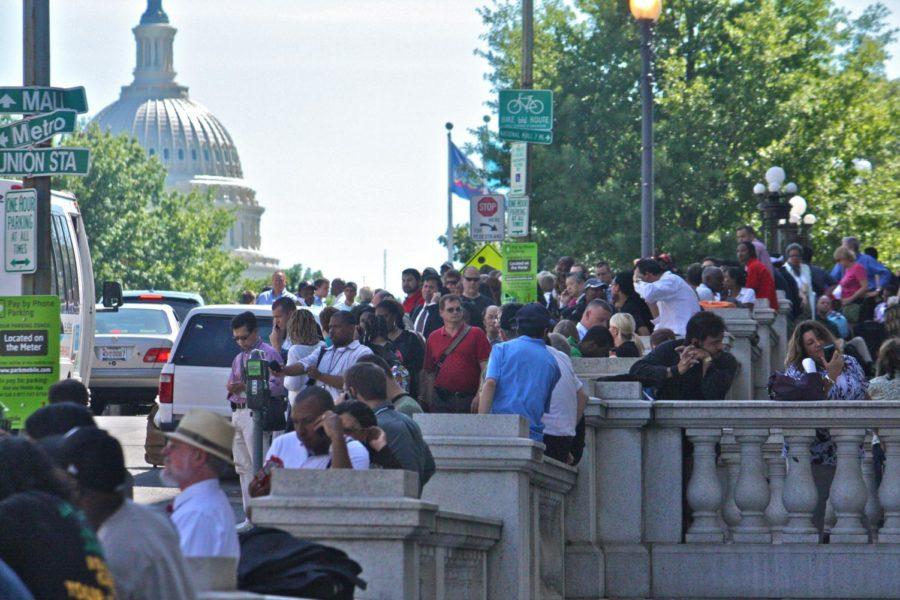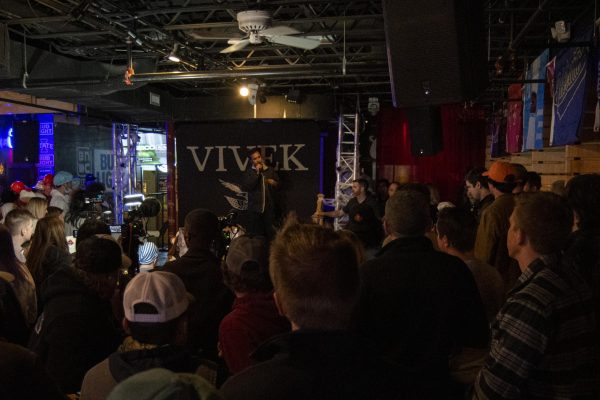Engineers check Washington Monument after rare earthquake
People are evacuated from several buildings in Washington, D.C. area on August 23, 2011, following a 5.8 earthquake in Virginia.
August 24, 2011
The Washington Monument remained closed Wednesday as engineers studied ways to repair cracks at the top of the capital’s iconic structure — one day after a rare 5.8-magnitude East Coast earthquake.
Washington’s National Cathedral also was closed after sustaining what its staff described as “substantial damage,” including numerous cracks in the building’s limestone blocks and broken pinnacles on its towers.
Most federal buildings and monuments in Washington, however, had reopened by late Tuesday — including the Lincoln and Jefferson memorials.
The quake struck at 1:51 p.m. Tuesday near the town of Mineral, Virginia, about 40 miles northwest of Richmond. Just 3.7 miles deep, it was felt from Georgia to northern New England.
No major injuries or extensive damage were immediately reported, but the quake prompted evacuations of numerous office buildings — including the U.S. Capitol — and affected operations at a nuclear power plant in Virginia.
Local officials across much of the Eastern Seaboard scrambled to determine what, if any, damage had been inflicted in various cities and states. North Carolina Gov. Beverly Perdue on Wednesday morning announced a “cursory inspection” of state buildings.
Some damage was reported at both the middle school and high school near the epicenter of the quake in Mineral, where a couple of houses also collapsed.
“It’s still kind of a state of shell shock here,” CNN’s Brian Todd said Wednesday, reporting from the town. “People still just can’t believe this happened. This is a natural event that just does not happen on the East Coast.”
With so many along the coast unaccustomed to earthquakes, many people were left wondering whether all that rumbling could have been caused by a truck, helicopter, an explosion or some other force.
Desi Fleming, a resident of Mineral, said the quake arrived with a rumbling “that sounded like a train coming to a stop.” It knocked down two chimneys on the converted 1900-vintage home that now houses her parcel-shipping business.
Kate Duddy was alone in an office building elevator in Manhattan when the shaking started.
“I have never felt a quake before. It was scary having no idea what the cause was,” she said. “I felt the vibrations, and the elevator stopped for a period of about five minutes.”
The earthquake triggered an automatic shutdown of the North Anna nuclear power plant less than 20 miles from the epicenter after it lost electricity.
Early Wednesday, Dominion Virginia Power said primary power was restored to the cooling systems of two nuclear reactors that had been affected. The plant used back up diesel generators after power was lost, the company said.
Dan Stoddard, senior vice president of nuclear operations for Dominion, said there was no damage to the spent fuel pool.
The plant vented steam, but there was no release of radioactive material, Louisa County spokeswoman Amanda Reidelbach told CNN.
Officials later confirmed that alert levels at the plant had been lowered after a thorough check of its power sources and cooling systems.
The quake signaled “unusual events” at 12 other nuclear facilities across the East Coast and Michigan, U.S. authorities reported.
Tuesday’s incident occurred in a known seismic zone in central Virginia, said Dave Russ of the U.S. Geological Survey. But the strength of the earthquake was a bit surprising. A 5.9 event occurred in 1897 near Blacksburg, Virginia, he said.
CNN’s Vito Maggiolo, Chris Lawrence, Susan Candiotti, Dan Lothian, Joe Sutton, Jim Acosta, Larry Shaughnessy, Matt Smith, Sarah Aarthun, Carol Cratty, Phil Gast, Dugald McConnell, Dana Ford, Catherine Shoichet and Tom Watkins contributed to this report















